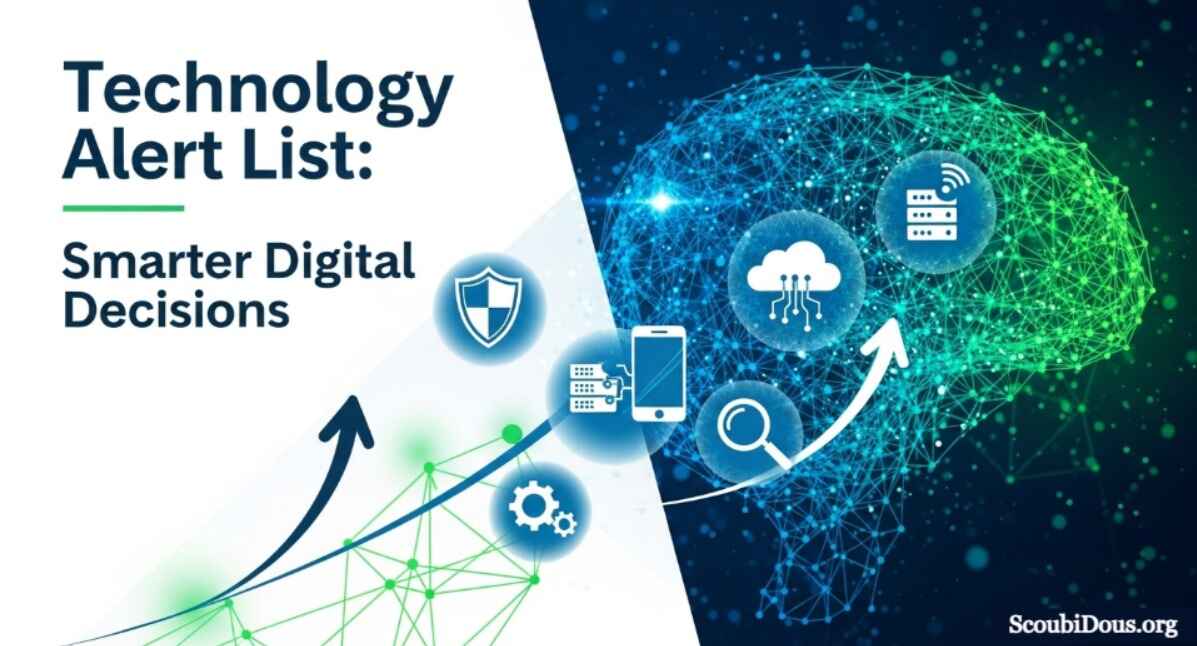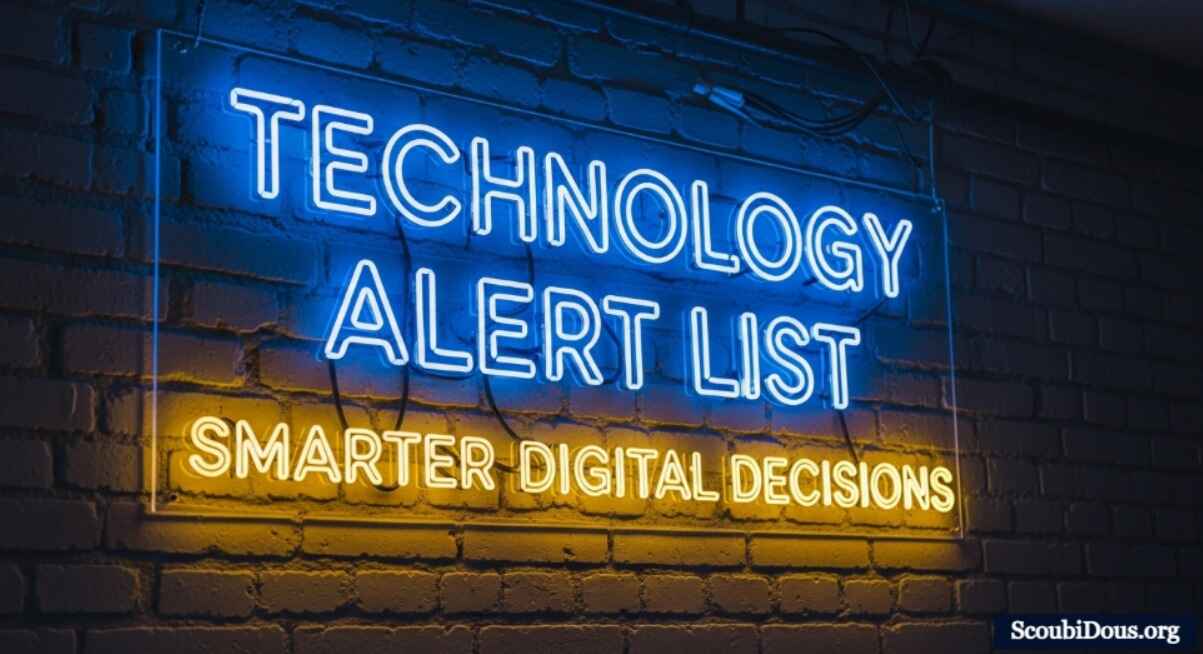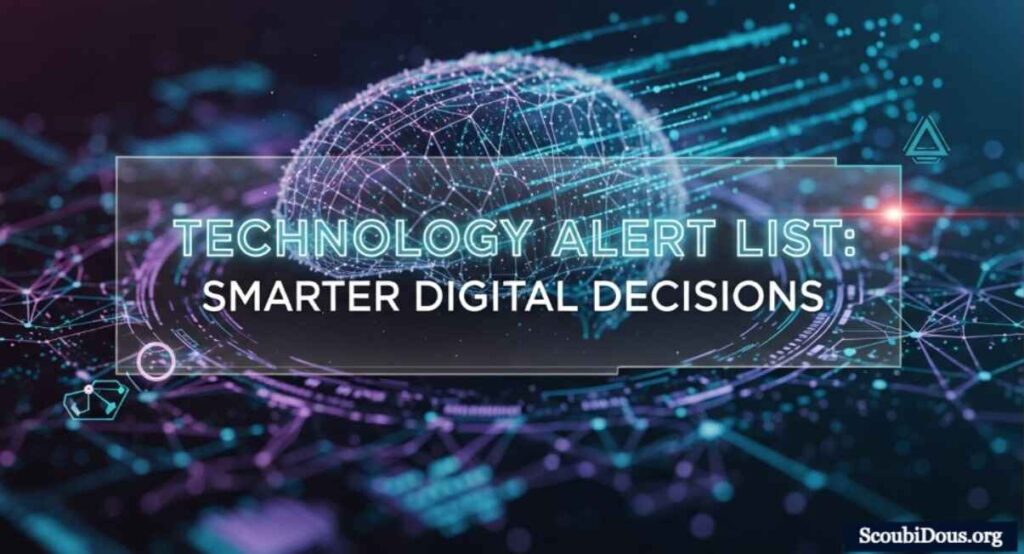Introduction
Technology is moving at lightning speed. From artificial intelligence shaping industries to cybersecurity threats evolving daily, keeping track of the latest updates has become both a necessity and a challenge. This is where a technology alert list comes in.
A technology alert list is not just a collection of news; it is a curated guide that keeps businesses, professionals, and everyday users informed about critical innovations, risks, and opportunities.
Whether you are a startup founder, an IT specialist, or a curious learner, having access to the right alerts can help you make smarter decisions, safeguard your data, and prepare for the future.
In this article, we will explore everything you need to know about technology alert lists, from their importance to how you can build and use them effectively.
What Is a Technology Alert List?

A technology alert list is a structured compilation of the latest updates, news, and warnings in the tech world. It usually includes:
- Emerging technologies such as AI, blockchain, and quantum computing
- Cybersecurity threats like data breaches, phishing attacks, and ransomware trends
- Software and hardware updates including patches, new releases, and vulnerabilities
- Industry-specific news for sectors like healthcare, finance, or education
- Regulatory and compliance alerts that businesses must follow
Think of it as a personalized radar system that helps you detect what’s coming next in technology.
Why You Need a Technology Alert List
1. Stay Competitive in Business
Companies that adapt quickly to new technologies are more likely to succeed. A technology alert list ensures that decision-makers are never caught off-guard.
2. Improve Cybersecurity Readiness
With cyber threats growing more sophisticated, early warnings help individuals and organizations defend themselves better.
3. Support Smarter Investments
Investors use technology alert lists to identify profitable startups, emerging industries, and potential risks before putting money on the table.
4. Enhance Professional Growth
For IT professionals, developers, or digital marketers, keeping up with the latest trends can lead to better job opportunities and skill upgrades.
Key Categories in a Technology Alert List
Artificial Intelligence and Machine Learning
- Latest breakthroughs in deep learning models
- AI regulations shaping business practices
- Tools that improve productivity using AI automation
Cybersecurity Threats and Solutions
- Zero-day vulnerabilities in popular software
- New types of ransomware and malware tactics
- Best practices and recommended tools for defense
Cloud Computing and Infrastructure
- Updates on AWS, Microsoft Azure, and Google Cloud
- Shifts towards hybrid and multi-cloud environments
- Security and cost-optimization strategies
Consumer Electronics and Devices
- Smartphone and laptop launches
- Smart home technologies and IoT innovations
- Wearables transforming healthcare and fitness
Blockchain and Digital Currencies
- Cryptocurrency market shifts
- Blockchain use in supply chains and contracts
- Government policies on digital assets
Regulations and Compliance Alerts
- GDPR and privacy law updates
- Industry-specific data handling requirements
- Global shifts in technology legislation
How to Build Your Own Technology Alert List

Creating a useful technology alert list requires a combination of sources, strategies, and tools.
Define Your Objectives
Ask yourself:
- Am I tracking alerts for personal growth?
- Do I want to protect my business from cyber threats?
- Am I monitoring investment opportunities?
Select Reliable Sources
Look for trusted outlets, industry reports, expert communities, and government advisories. Avoid relying on rumors or unverified blogs.
Use Smart Tools
You can automate alerts with tools like:
- RSS feeds for continuous updates
- AI-powered monitoring tools that filter relevant data
- Custom dashboards for real-time monitoring
Organize by Category
Break down your alert list into segments such as cybersecurity, AI, blockchain, or consumer tech for quick reference.
Update Regularly
A static list becomes outdated quickly. Schedule periodic reviews to refresh information.
Technology Alert List vs. General News Feeds
| Feature | Technology Alert List | General News Feed |
| Focused Content | Curated for tech topics | Covers all categories |
| Timeliness | Real-time or frequent updates | May lag behind in reporting |
| Customization | Tailored to specific interests | Limited personalization |
| Actionable Insights | Provides practical takeaways | Often just information |
This comparison highlights why a dedicated technology alert list is more effective than relying solely on general news.
How Companies Use Technology Alert Lists
- Financial Institutions monitor cybersecurity alerts to prevent fraud and protect customer data.
- Healthcare Providers track medical technology advancements for better patient care.
- E-commerce Businesses follow AI and cloud updates to enhance customer experience and logistics.
These examples show that a well-curated alert list can directly impact performance and security.
Actionable Insights from a Technology Alert List
- Prioritize security alerts first – A vulnerability left unchecked can cost millions.
- Cross-reference multiple sources – Don’t rely on a single feed.
- Turn alerts into action plans – Set up procedures to act when a critical update arrives.
- Train employees with alerts – Use them for workshops or team awareness programs.
- Use alerts for forecasting – Identify early signs of industry disruption.
Expert Opinions on Technology Alert Lists
- Tech Analysts emphasize that curated alerts reduce “information overload” and provide clarity in a noisy digital environment.
- CIOs and CTOs see them as essential for decision-making and long-term strategy.
- Security Experts argue that without timely alerts, even the strongest cybersecurity infrastructure becomes vulnerable.
Best Practices for Managing a Technology Alert List
- Keep it concise – Avoid overwhelming readers with too much data.
- Segment users – Different teams need different alerts.
- Leverage automation – Reduce manual effort with AI-based monitoring.
- Ensure credibility – Always verify before adding an alert to your list.
The Future of Technology Alert Lists

The next generation of technology alert lists will be powered by AI, predictive analytics, and personalization. Instead of simply reporting news, they will forecast potential disruptions and opportunities before they occur.
- AI-driven curation will filter noise automatically.
- Predictive alerts will provide early warnings about upcoming threats or trends.
- Personalized dashboards will adapt to individual roles and industries.
Conclusion
In a digital age where change is constant, a technology alert list is not just a tool but a necessity. It empowers individuals and businesses to stay informed, secure, and competitive. By carefully curating alerts and using them strategically, you can transform information into action and uncertainty into opportunity.


